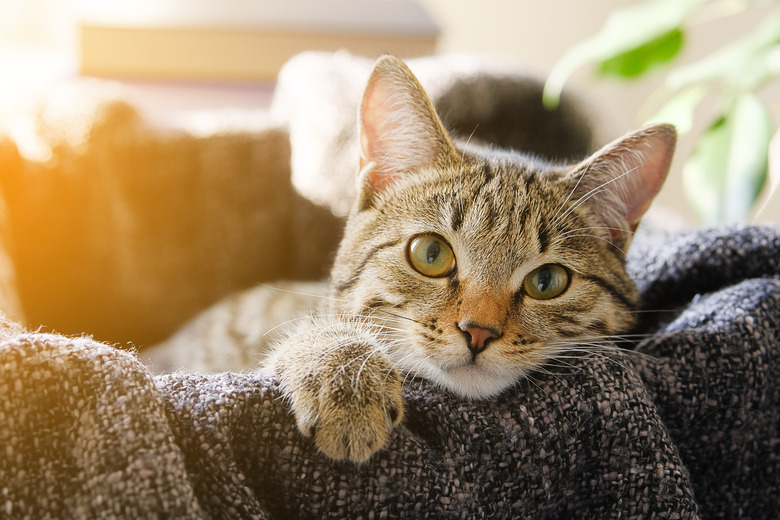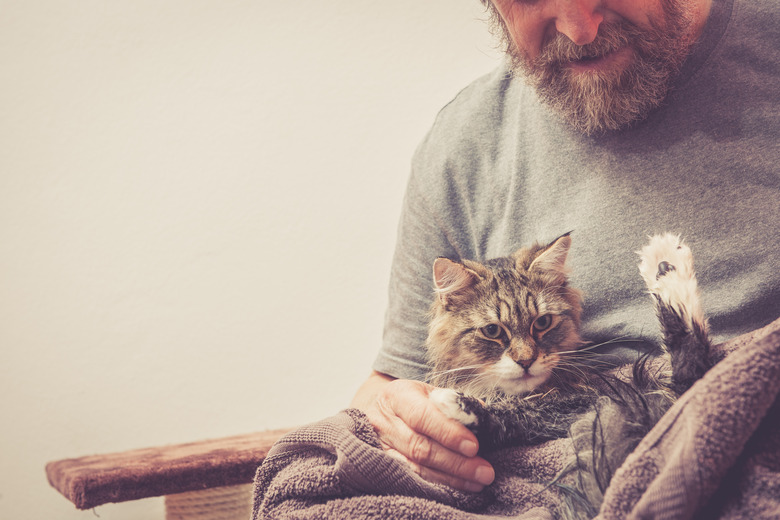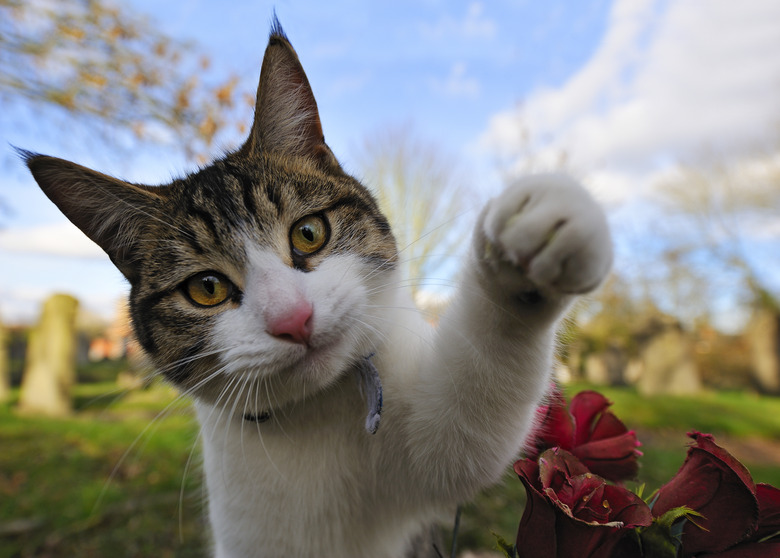How To Clean A Cat's Paw
Cats are known for being finicky about their grooming, but there are times when you need to step in and help. Whether your cat found his way into a puddle of mud or you are trying to clean his paws during a bath, preparing a cat paw cleaner at home requires only a few household items and a bit of patience with your cat. You can clean your cat's paws as often as once a day to help keep bacteria and other material away.
1. Assess your cat's paw
First, determine if the paw simply needs to be cleaned because your cat stepped in tree sap, for instance, or if there is an injury to the paw. You may be able to use tweezers to gently remove something that is stuck but still accessible, such as a thorn, says Vet Info.
Check your cat's paw for scratches, cuts, torn nails, or other injuries. If your cat has any deep or bleeding cuts or torn or ingrown nails, call your veterinarian. You should also contact your veterinarian if your cat has material in her paws that is stuck, such as a piece of glass that you can't easily remove with tweezers, so that it can be safely removed. If the material is causing an infection, your veterinarian can help you quickly treat the problem.
2. Gather your materials
Gather the materials you will need, including baby wipes, cat shampoo, a damp washcloth, a towel for securing your cat while cleaning them, and a pair of household tweezers. You can also gather a pet-friendly antiseptic if you suspect your cat has an injury or scratches on or near his paws.
3. Secure your cat
Securing your cat with a towel makes him feel safer and also prevents him from lashing out with his claws, which can cause an injury to yourself. It's sometimes called the burrito method because it involves wrapping a cat from both sides with the ends of the towel. First, drape a towel over the cat's back, close to the head. Grasp one side of the towel and pull it across the cat's chest. Pull the other side of the towel around and hold both flaps. This may be easier to do with an assistant, but it can be done by holding the cat with one hand and then cleaning their paw with the other.
Some resources may recommend scruffing to calm your cat. Scruffing is the practice of holding a cat by grabbing the fur on the back of the neck in the way that a cat's mother held them when they were kittens. It used to be a recommended method of subduing a cat but is no longer recommended. Tufts University says scruffing an adult cat triggers fear and stress since they have lost the reflex that causes a kitten to relax when their mother scruffs them. They recommend talking softly and using a towel.
4. Wipe the paw
Use the damp washcloth dipped in cat shampoo or the baby wipe to gently wipe the surfaces of your cat's front paws, one at a time. Gently rub between the paws to remove dirt and any lodged material, such as cat litter or mud. Slide the bottom end of the towel up to clean each of your cat's back paws, still securing your cat within the towel.
5. Remove any objects
Check your cat's paws to see if there is a splinter or other material lodged in its paws. If anything is lodged in your cat's paw, use tweezers to gently remove the object. Apply an antiseptic to the area to prevent infection and help heal the wound.
Things Needed
-
Towel
-
Damp washcloth
-
Cat shampoo
-
Baby wipes
-
Tweezers
-
Antiseptic
Always check with your veterinarian before changing your pet's diet, medication, or physical activity routines. This information is not a substitute for a vet's opinion.


